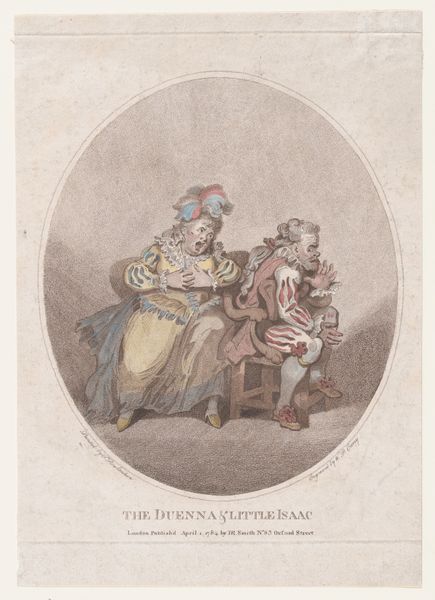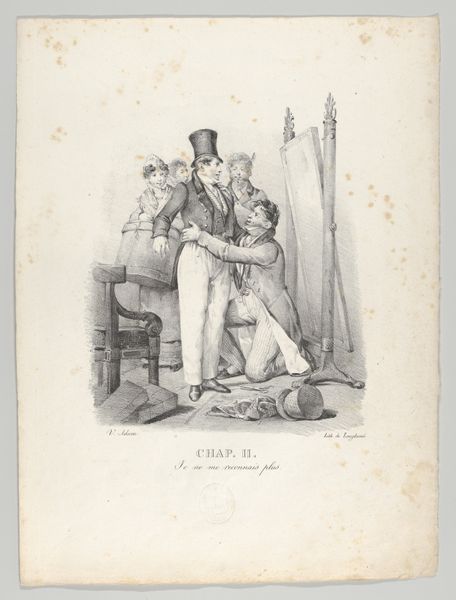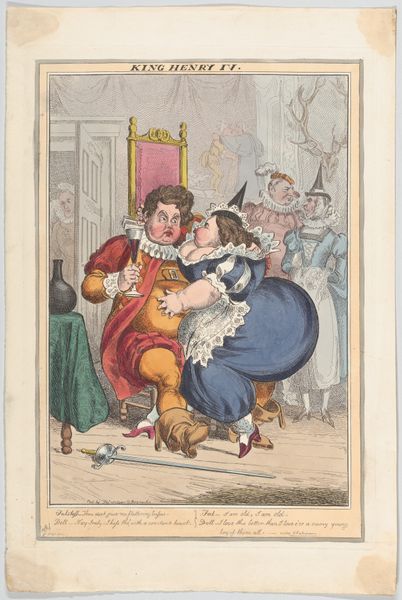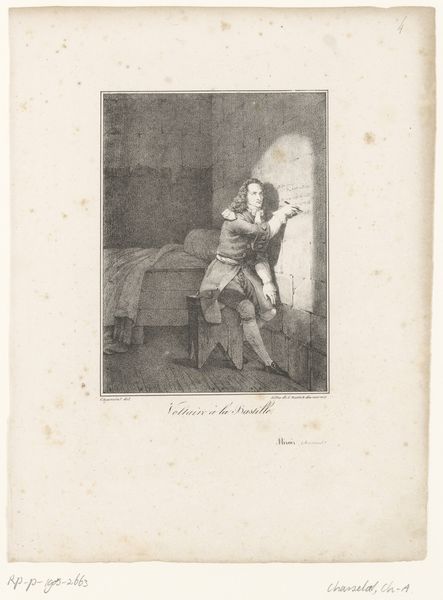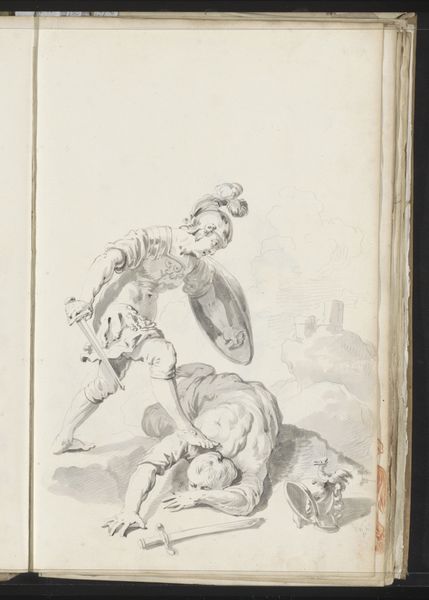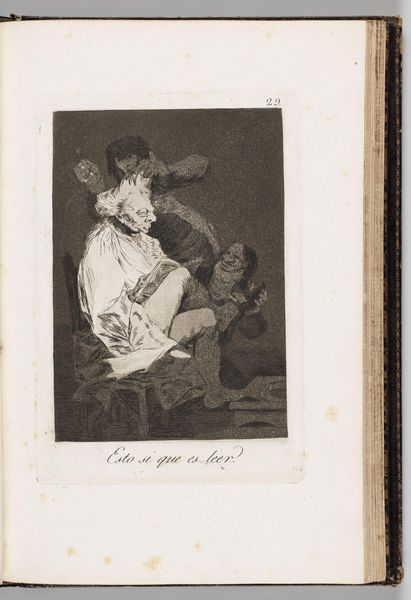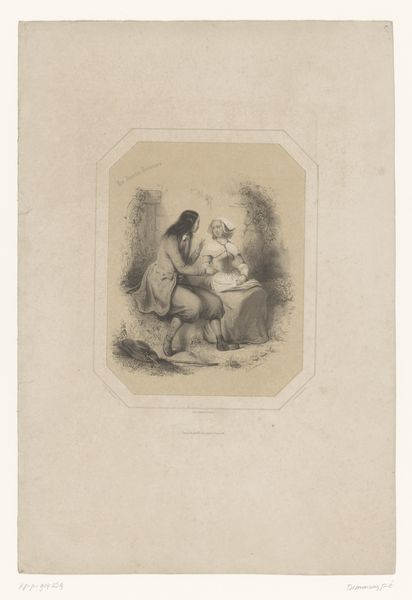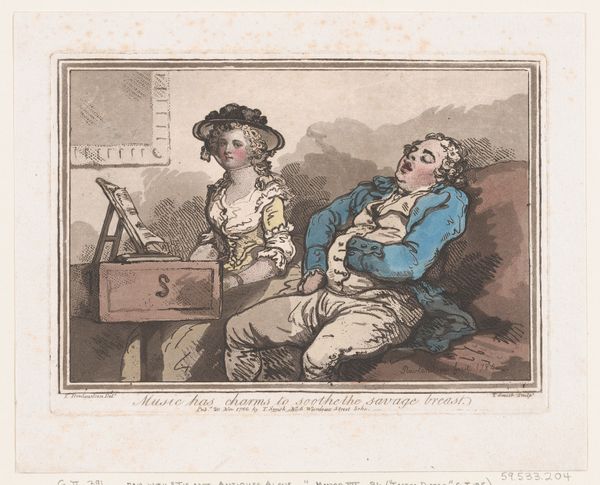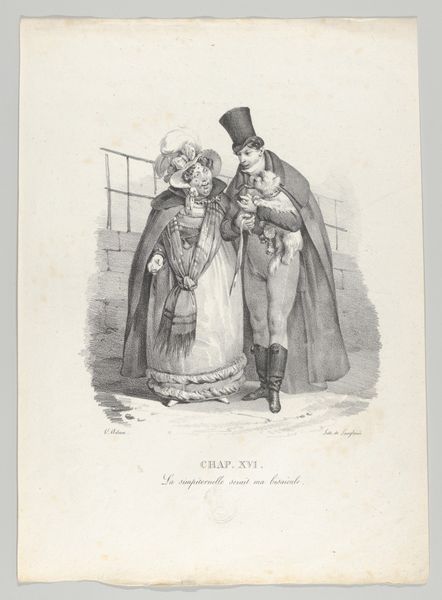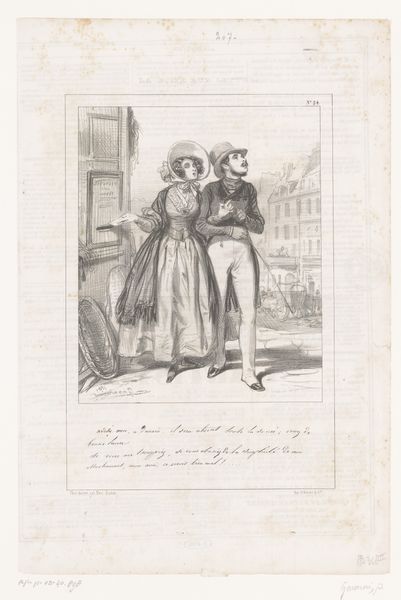
Dimensions: height 154 mm, width 113 mm
Copyright: Rijks Museum: Open Domain
Curator: Welcome! We're standing before "Jongetje en meisje plagen elkaar" or "The Falling Out," an engraving by Mathias de Sallieth, created in 1785 and held here at the Rijksmuseum. Editor: The immediate impression is one of playful energy. The composition is quite striking; they appear locked in a moment of comical conflict. Curator: De Sallieth's piece, classified under genre painting, offers a lens into the social dynamics of the era, touching on childhood and gender roles in 18th-century society. Notice how the boy is slightly restrained, but it is the girl who instigates. Does this speak to constraints placed on boys? How they must restrain from reacting to childish provocations? Editor: Looking closer, the technique feels almost academic despite its seemingly informal subject. Observe the delicate hatching and stippling that defines form and space, and the overall construction that emphasizes symmetry even in what is ostensibly a fleeting action. Curator: And what of the historical implications here? This was an era of immense socio-political upheaval in Europe and beyond. How can art engage or disengage with it? Or in this case, divert attention to smaller scale societal matters. This focus on domestic scenes in Dutch art can be seen as escapism, and a deliberate avoidance of turbulent matters. Editor: One can also interpret the interaction within a broader semiotic framework. The gesture of her grabbing at his face could be interpreted as a violation, however slight, in their understood relational dynamic and challenges established gender roles. Curator: Do you feel it speaks more to romanticism ideals of human experience rather than directly to gender inequality or political discourse? Editor: The romanticism elements are also quite clear. A certain sentimentality exists here, though presented more gently. Its strength lies in representing a brief clash captured for perpetuity. Curator: And perhaps that in itself comments on its relationship with gender equality as perceived then, and indeed, today. The moment is there forever, to be examined and scrutinized. Editor: Ultimately, an engraving so deftly realized provokes contemplation of technique, and also deeper investigation into the values held. Curator: Values regarding gender, regarding politics, and domesticity too! An exciting combination that allows us, more than two centuries later, to reflect on where things are today.
Comments
No comments
Be the first to comment and join the conversation on the ultimate creative platform.
